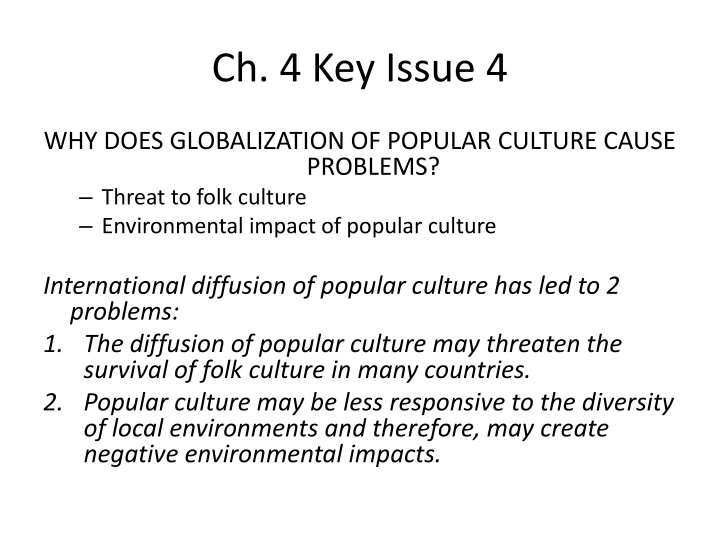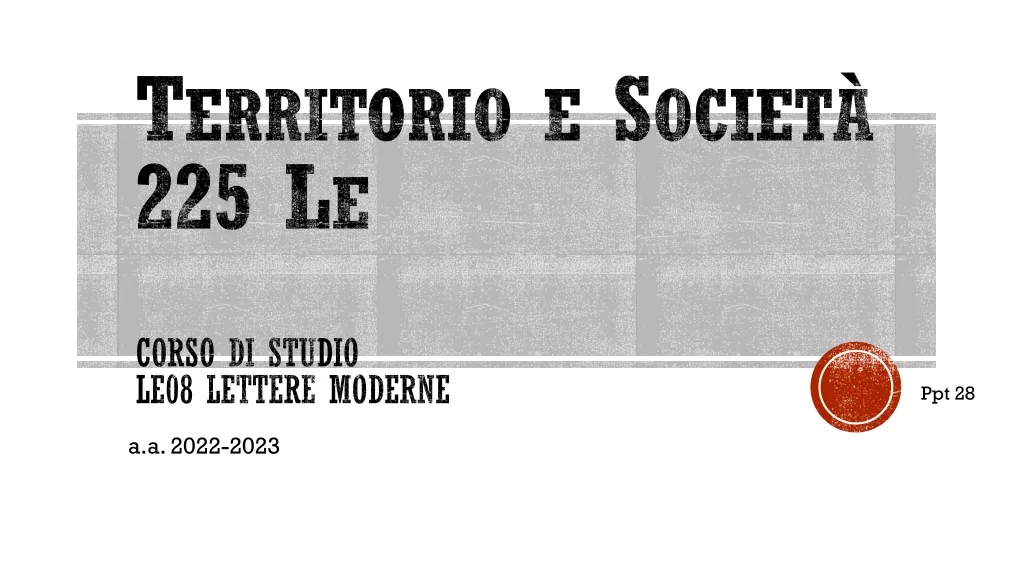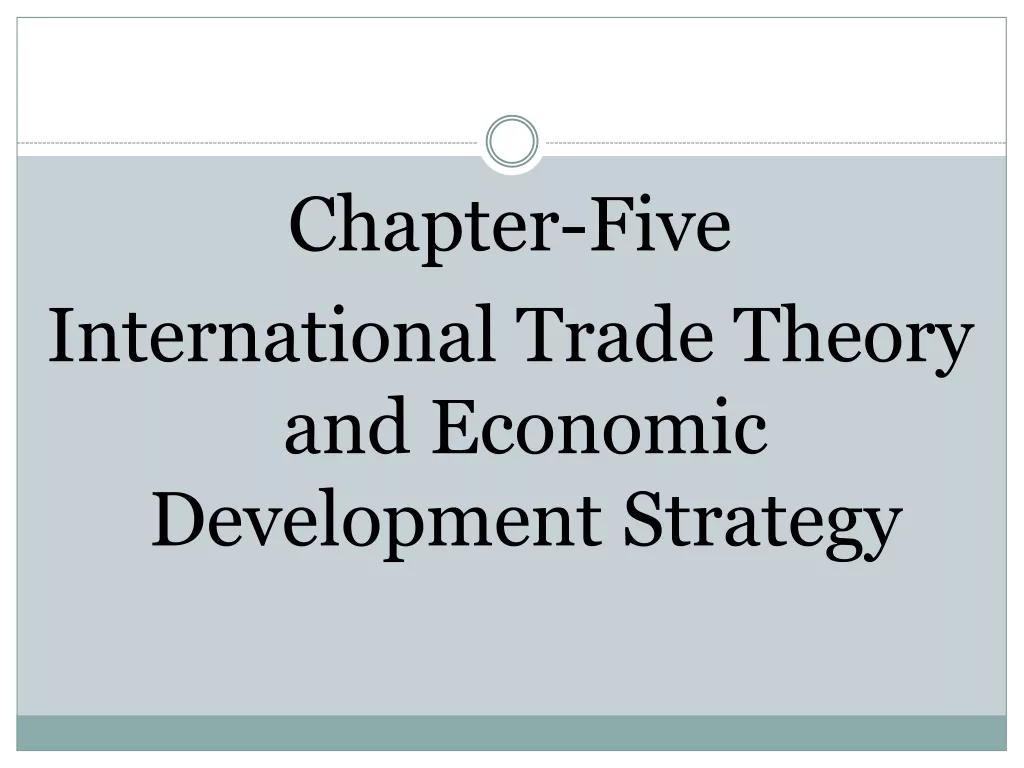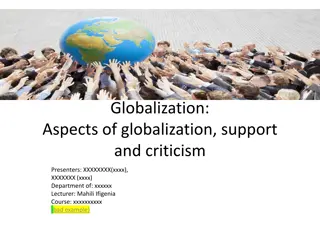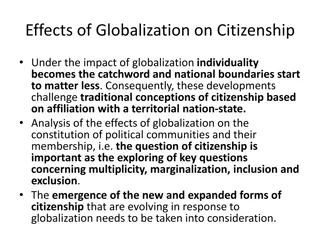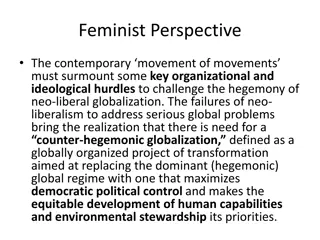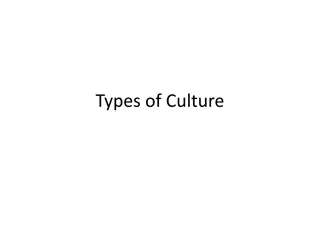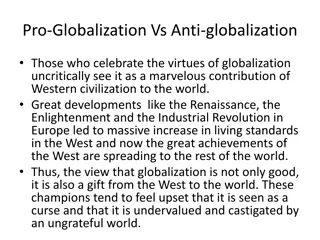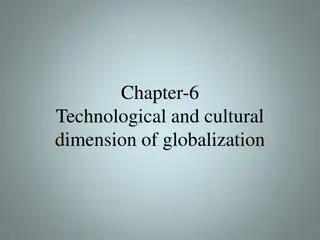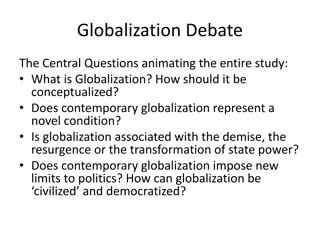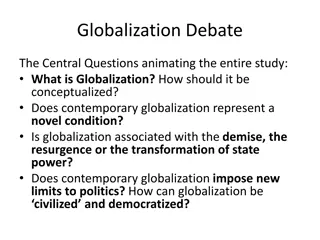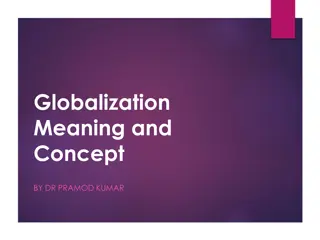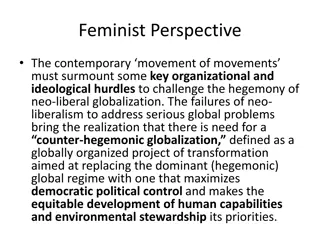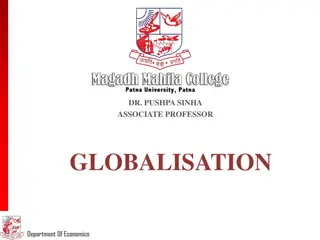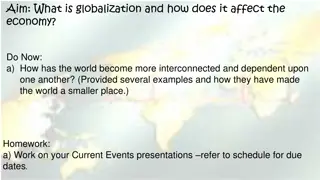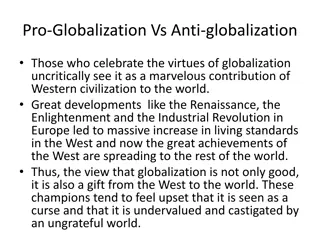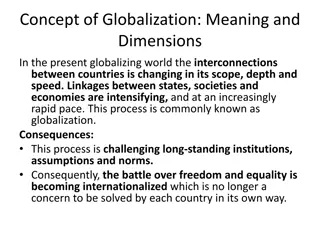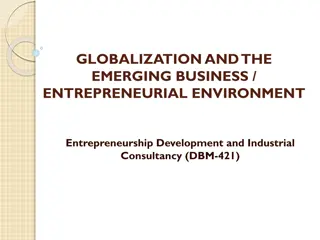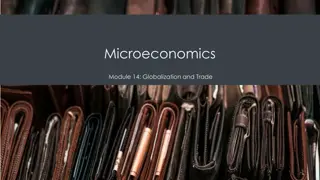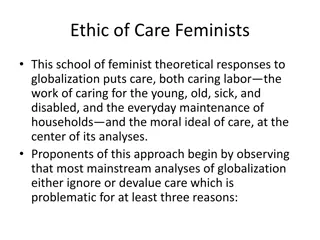Challenges of Globalization in Popular Culture
Globalization of popular culture presents challenges such as the threat to folk culture and negative environmental impacts. Rising incomes lead to a shift from folk to popular culture, affecting traditional values and clothing symbolism. The adoption of Western clothing in Middle Eastern countries faces opposition, and the global diffusion of pop culture can challenge traditional roles of women, leading to discriminatory practices. Additionally, the dominance of popular culture by more developed countries is viewed as a threat to independence in some less developed countries, especially through the influence of foreign media.
Uploaded on Oct 03, 2024 | 1 Views
Download Presentation

Please find below an Image/Link to download the presentation.
The content on the website is provided AS IS for your information and personal use only. It may not be sold, licensed, or shared on other websites without obtaining consent from the author.If you encounter any issues during the download, it is possible that the publisher has removed the file from their server.
You are allowed to download the files provided on this website for personal or commercial use, subject to the condition that they are used lawfully. All files are the property of their respective owners.
The content on the website is provided AS IS for your information and personal use only. It may not be sold, licensed, or shared on other websites without obtaining consent from the author.
E N D
Presentation Transcript
Ch. 4 Key Issue 4 WHY DOES GLOBALIZATION OF POPULAR CULTURE CAUSE PROBLEMS? Threat to folk culture Environmental impact of popular culture International diffusion of popular culture has led to 2 problems: 1. The diffusion of popular culture may threaten the survival of folk culture in many countries. 2. Popular culture may be less responsive to the diversity of local environments and therefore, may create negative environmental impacts.
Threat to Folk Culture Rising incomes can create demand for the possessions of popular culture. Turning away from folk culture= turning away from the society s traditional values = dominance of Western perspectives
Loss of Traditional Values Clothing is a symbolic importance in folk culture. African and Asian countries: contrast between farm workers and urban business/ government workers. Adopting a MDC s society s types of clothing is a process of imitation and replication of foreign symbols of success.(Example: men s business suits) Adoption of MDCs clothing customs has become a symbol of authority and leadership.
MDCs clothing in Middle Eastern countries Controversial! Fundamentalist Muslims oppose the adoption of Western clothes, especially by women in the cities. Women are urged to abandon skirts and blouses in favor of the traditional black chador (head covering and veil)
Change in traditional role of women Global diffusion of pop culture threatens the subservience of women to men that is deeply embedded in many folk cultures. 1990s Taliban regime in Afghanistan- women were banned from school, working outside homes, seeking health care or driving a car. Permitted to leave the home only if fully covered by clothing and escorted by a male relative. Women behaving like Westerner s in public (wearing fingernail polish, revealing her face or walking alone) could be shot or beaten. Legal equality and economic/ social opportunities outside the home have become widely accepted in MDCs, but women still continue to suffer from discriminatory practices. Negative impacts for women in LDCs with contact with MDCs: men from MDCs visit Japan and European countries, purchase tours that include airfare, hotels and the use of a predetermined number of women. Sex tours in: Philippines, Thailand, South Korea, Indonesia, Sri Lanka. International prostitution is encourage as a major source of foreign currency coming into their countries.
Threat of Foreign Media Imperialism Leaders of some LDCs consider the dominance of popular customs by MDCs as a threat to their independence. Threat is posed mostly by the media- news and TV. The spread of TV as a new method of economic and cultural imperialism from MDCs The U.S., United Kingdom and Japan, dominate the TV industry in LDCs. U.S. TV presents American beliefs and social forms like upward social mobility, freedom for women, glorification of youth, stylized violence. These conflict with and drive out traditional social customs.
Western Control of News Media LDCs fear the effects of the news-gathering capability of the media even more than their entertainment function. Diffusion of information is dominated by the Associated Press (AP) and Reuters- both U.S. and British owned. News media in most LDCs are dominatd by the government, a political party or a private individual. Many African and Asian government officials criticize the Western concept of freedom of the press. In many regions of the world, the only unbiased information comes from the BBC World service.
Environmental Impact of Popular Culture Diffusion of golf: golf courses= 200 acres Example of imposing popular culture on the environment 200 courses built in the past 20 years= increased income and free time of people # of golf courses per person is greatest in north- central states Kansas to North Dakota and northeastern states Golf courses remake the landscape- creating flattened hills or cutting grass, sand traps
Uniform Landscapes Distribution of pop culture around the world tends to produce more uniform landscapes. Uniform landscapes- the spatial expression of a pop culture in one location will be similar to another. Promoters of pop culture want a uniform appearance to generate product recognition and greater consumption. (Example: McDonald s restaurants look the same around the world.)
Fast Food Restaurants Good example of uniformity: fast-food restaurants. Franchise: a company s agreement with businesspeople in a local area to market that company s product. Allows the local outlet to use the company s name, symbols, etc. Convenience of the product, low-cost socializing location for teens and families. Success depends on large-scale mobility: people who travel or move to another city recognize a familiar place.
Negative Environmental Impact Depletion of scarce natural resources Increased demand for raw materials Petroleum for fuel/ energy Pop culture demands a large supply of certain animals (fashion and food) To produce 2.2 pounds of beef sold in the store- nearly 22 pounds of grain are consumed by the cow (that grain could have been used to directly feed people)
Pollution- Pop culture generates a high volume of waste: solids, liquids, gases Folk culture can also damage the environment: natural processes are ignored- burning grasslands, extensive forest cutting, overhunting, soil erosion Material culture contributes to the modification of the environment and nature influences the cultural values of an individual or a group.
